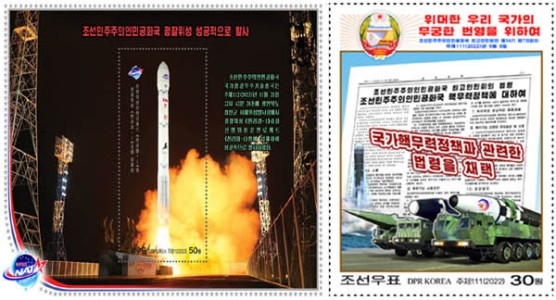
커뮤니티
회원간의 이야기 공간으로 다양한 정보를 나눠보세요."North Korean Stamps: A Microcosm of Propaganda"
The 7th Congress of the Workers' Party of Korea, held in Pyongyang from May 6 to 9, 2016, marked the first such gathering in 45 years. This congress solidified Kim Jong-un's leadership and declared North Korea a socialist state. This shift from the 'military-first' policy of Kim Jong-il to a focus on building a 'socialist powerhouse' was a response to the 'Arduous March' of the 1990s, a period of severe economic hardship.
In countries that are members of the Universal Postal Union, the issuance of stamps is typically the responsibility of the state or an authorized government agency. While stamps in capitalist countries often serve as simple postage indicators or promote national heritage, those issued by socialist countries are typically used to promote the cult of personality of the supreme leader and the legitimacy of the regime.
I agree with Naito Yosuke's assertion that North Korean stamps can be classified as the smallest form of propaganda. These stamps combine images, slogans, and quotations to promote political messages to the people. They are used to glorify the Kim dynasty and emphasize key party decisions.
The symbolic characteristics of North Korean stamps can be summarized as follows:
- A means of postal communication: Like stamps in other countries, North Korean stamps are used to pay for postal services. They are affectionately referred to as "little postmen."
- A tool for internal propaganda: Stamps are used to disseminate propaganda and indoctrinate the population. They feature slogans, quotes from party leaders, and images related to national holidays, symbols, and historical events.
- A medium for external propaganda: North Korean stamps are used to promote the superiority of the North Korean system and its status as a normal state. North Korea actively participates in international stamp exhibitions to promote its image.
- A source of foreign currency: North Korean stamps are sold to foreign collectors, generating revenue for the country.
Unlike capitalist countries where the role and importance of stamps are rarely discussed in academic publications, North Korea, under severe international sanctions, has found it necessary to emphasize the importance of stamps as a means of external communication. North Korean media, including the Rodong Sinmun, frequently highlight the role of stamps in conveying the country's message to the world.
For example, when North Korea launched its Kwangmyongsong-1, 2, 3, and 4 satellites in 1998, 2009, 2012, and 2016, respectively, it issued stamps to commemorate these events. While North Korea claimed that these launches were for peaceful purposes, many countries, including South Korea, viewed them as tests of long-range missiles. In response to international sanctions, North Korea issued stamps celebrating the successful launch of the Hwasong-14, Hwasong-14 (second test), and Hwasong-15 intercontinental ballistic missiles, declaring the completion of its nuclear force.

Commemorative stamps for the successful launch of the Chollima-13 satellite (2023) and the adoption of the nuclear force policy law (2022). [Photo provided by Ahn Jae-young]
North Korea's use of stamps to convey these messages serves multiple purposes. Domestically, it aims to bolster morale and solidify support for the regime by emphasizing the threat of US aggression. Internationally, it seeks to project an image of a powerful nuclear state capable of deterring potential adversaries. The shift in focus toward economic development, as reflected in the stamps, suggests a desire to alleviate domestic economic pressures and improve the living standards of the North Korean people.
Source from http://www.tongilnews.com
| 댓글 0 개 |





